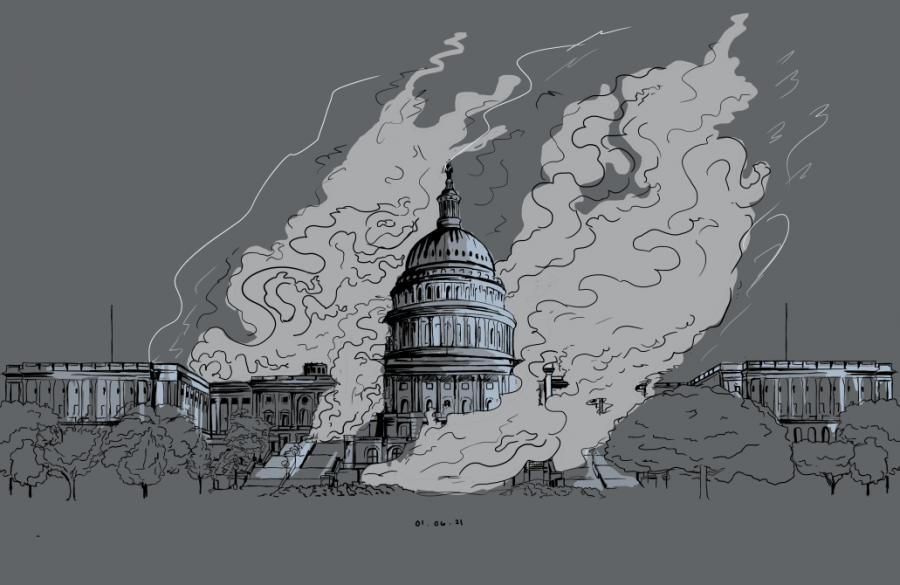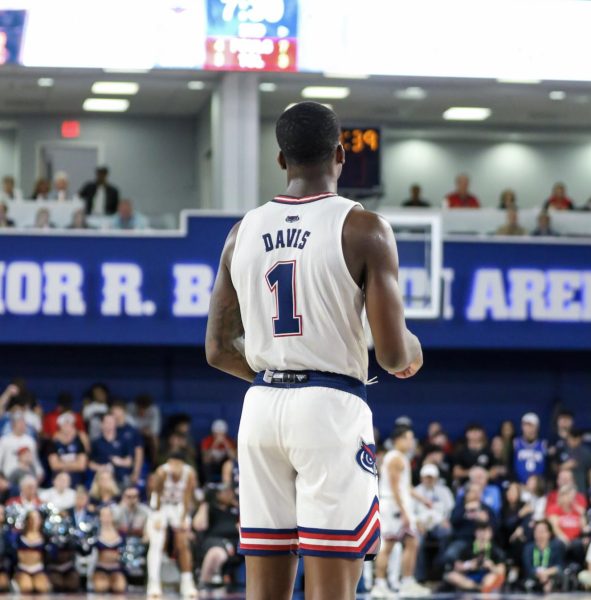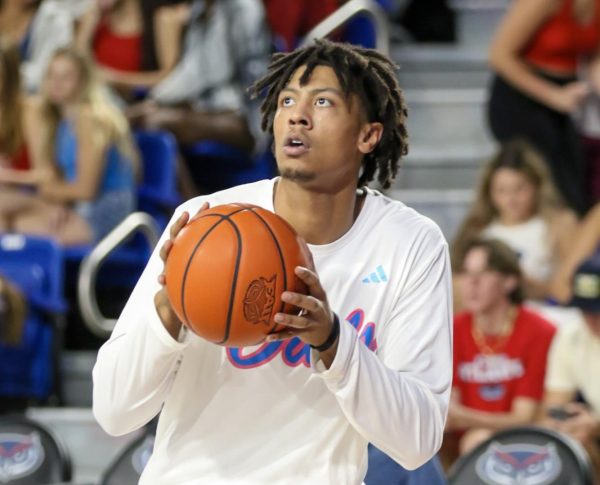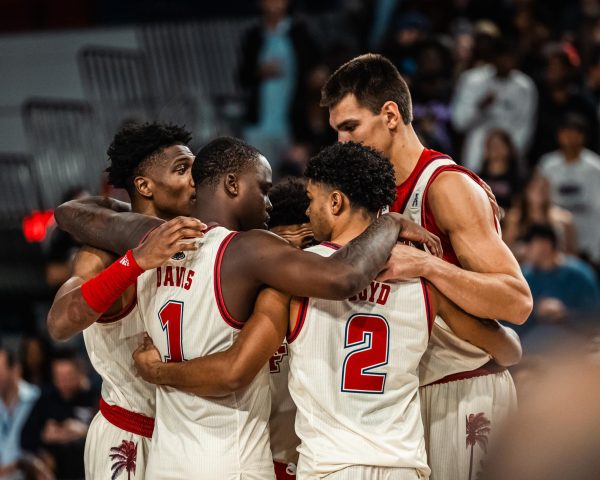Opinion: It matters if you’re Black or White
Contributing Writer Taylor Reid shares her thoughts on the raid of the Capitol and how it sheds light on racial inequality in the United States.
January 8, 2021
On Wednesday, pro-Trump supporters mobilized and infiltrated the U.S. Capitol to contest the certification of Joe Biden as President-elect.
Law enforcement officers appeared to be overwhelmed with the mob. This is a stark contrast to armed and prepared law enforcement at social justice protests of last summer.
There is no doubt that the handling of this insurrection sheds more light on the racial inequalities present in this country. Pro-Trump supporters, almost entirely White, were met with little to no force as they ransacked while police quickly met people of color in protests over the summer with tear gas, guns, and other forms of force.
A mob of Trump supporters began their attempt to enter the Capitol building from around 1:10 p.m. By 1:33 p.m. rioters made their way to the House and Senate. The District of Columbia National Guard wasn’t mobilized until 3:51 PM Wednesday, according to USA Today.
During the protests against police brutality and racial injustices, the National Guardsmen and other law enforcement were already armed and prepared with little to no delay.
I was dumbfounded as I witnessed the chaos and treachery unfold. How did these people get in? Why are they doing this? Where are the police or the National Guard?
I kept picturing what things would look like if people of color dared to do this. It wasn’t a hard thing to do as images of the protests over the summer flashed before my eyes.
Chicago activist Kofi Ademola shared his remarks with USA Today about the police response on Wednesday and the police response during last summer’s protests.
“It’s not any shock that we see this huge contradiction,” he said. He pointed out there were “little to no consequences” for breaking into this government building as compared to Black protesters being “heavily policed” and “brutalized.”
The difference in how law enforcement treated people in both instances depended on the color of their skin. Both groups protested in the area of D.C., but one group was allowed to ransack a government building and take selfies with law enforcement because they weren’t Black.
Leaders from both the Democrat and Republican parties condemned the events. Former President Barack Obama took to Twitter to share his perspective. “History will rightly remember today’s violence at the Capitol,” he said. He pinned the blame on President Trump’s continuous lies about “the outcome of a lawful election.”
Senator Mitch McConnell acknowledged the mob’s failed attempt “to disrupt our democracy”.
President-elect Joe Biden also called on Trump to handle the situation which was answered by Trump with more statements about a stolen election.
How, I wondered, could people ransack the Capitol building and be let out peacefully, but people protesting social injustice be immediately met with force?
At the Black Lives Matter protests, police did not meet protesters peacefully.
LaToya Ratlieff is just one of dozens injured by police at a social injustice protest. As she choked on tear gas while trying to keep fellow protesters calm, police shot her with a rubber bullet in the head. This happened at a peaceful protest in Fort Lauderdale, Fla. on June 21, 2020.
Kyle Rittenhouse, who was 17 at the time, killed two people and injured one at a protest in Kenosha, Wis. about the shooting of Jacob Blake. He was not immediately arrested and is now praised and revered by Conservative groups. Now he pleads not guilty.
A Black woman is brutalized by police at a peaceful protest and an armed White boy is not. Thousands of White pro-Trump supporters, who stormed a government building, are let in by police and peacefully escorted out, but Black protesters couldn’t step foot inside the Lincoln Memorial.
I am not the only one puzzled, but not surprised, by the contrasting ways protests over the summer and the insurrection that threatened our government were handled.
Freshman Tamika Lazarre recalled watching a YouTube video of guards being sent into the building. “It kinda reminded me of the racial injustice protests when the National Guard were sent in,” she said.
As mentioned before, there was a difference in the mobilization of the National Guard. One would think the National Guard would be immediately deployed as the pro-Trump supporters tried to breach the Capitol building.
Joi Dean, president of the FAU chapter of the National Organization for Women, shared her frustrations.
“There is a discrepancy between how Black and Brown protesters are treated,” she said. Dean pointed out the raid of the Capitol as being a “clear and deliberate example of it” and “how ingrained racism is in our country.”
Her words resonated with me as she continued to share she knew of peers who defend the attack on our government. I, too, feel the pain and confusion of this in my own circles of friends.
Racism is prevalent in this country and the current administration has given racism a formal platform. It manifests itself in overt ways such as calling a Black person the n-word, but also in more subtle ways including microaggressions which aren’t as readily recognizable.
White people rioting in this way is defended, but Black and Brown people advocating for their lives are not.
People’s lives are not valued as highly as political beliefs it seems.
It is as if the attack on Wednesday was not a clear enough picture of the deep wounds America needs to address and the privilege White people have. It is clear there are people who still cannot see how black and white these issues are.
My heart is heavy and weary about the days to come. Still, I have hope eyes will be opened and wounds will begin to heal.
First, we have to face the fact that what one can and cannot do in this country depends on if one is Black or White.
Taylor Reid is a contributing writer for the University Press. For information regarding this or other stories email [email protected] or tweet her at @tayyalissa.














